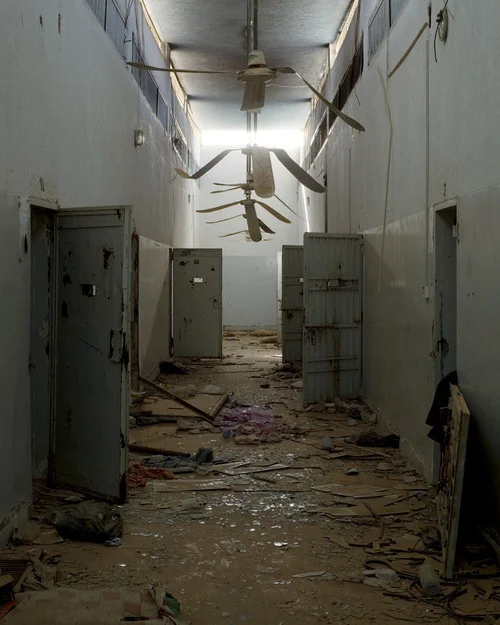Edmund Clark Walks Us Through 'Unseen Spaces'
UNSPECIFIED - “As I exit the elevator on what must be the eleventh or twelfth floor, the scene is one of destruction. Fallen masonry, dust, glass, rubbish strewn everywhere. Abandonment.
I am in an ordinary suburb of a former eastern bloc capital. The building belongs to a geological institute. The tidy hallway downstairs is lined with samples of rock and sparkling crystal. The tower overlooks a few streets of low-rise houses running between the crescent of a main rail artery and monolithic communist era apartment blocks lining a very long and wide road, or boulevard, according to the name on Google maps. I am heading for the roof.
The caretaker apologizes for the surroundings. The top floors were earmarked for refurbishment but nothing has happened after everything was ripped out. Maybe just after the revolution. That was a while back.
From the roof I hope to see another building. At ground level from the front it appeared to have only two floors, but I think more levels will be clear from the back as the ground slopes down to the train tracks. I know there is also a basement - even if I won’t see it.
It is forbidden to photograph the building due to anti-terrorism measures. I am here because it is one in a chain of locations that may link the secrets of a different country, far from here and far removed from communism.
Sharp light blinds me as I pull myself through the gap of the jammed steel door onto the roof. Even as my eyes recover, in my mind I am looking somewhere else. I am ankle deep in green files; yellowing paper covered in fingerprints and a foreign script; and monochrome photographs of faces. I am in a bombed out and ransacked prison administration block. Another link in this chain and after another revolution.
Details of the disused floors in this institute have taken me there: the patterned floor tiles, the dull grime covered grey walls, the steel balustrades on the staircase. And the details of the destruction: ripped out power sockets, exposed cables and the sound and feel of plaster and glass underfoot. Then I move to the wreck of the prison with its abandoned clothing and isolation cells, the murals of men being shot in the head and the carcasses of animals who crawled there to die.
‘Maybe we built it for him’ jokes my minder. ‘My country had very close ties with his regime and we did a lot of construction in those days.’
But that was in another time and another order.
Back in the present I can see the building below me has even more floors than I expected. Through my lens I can see someone smoking a cigarette on the fire escape.”
- Edmund Clark, 2014 Emergency Fund Grantee


